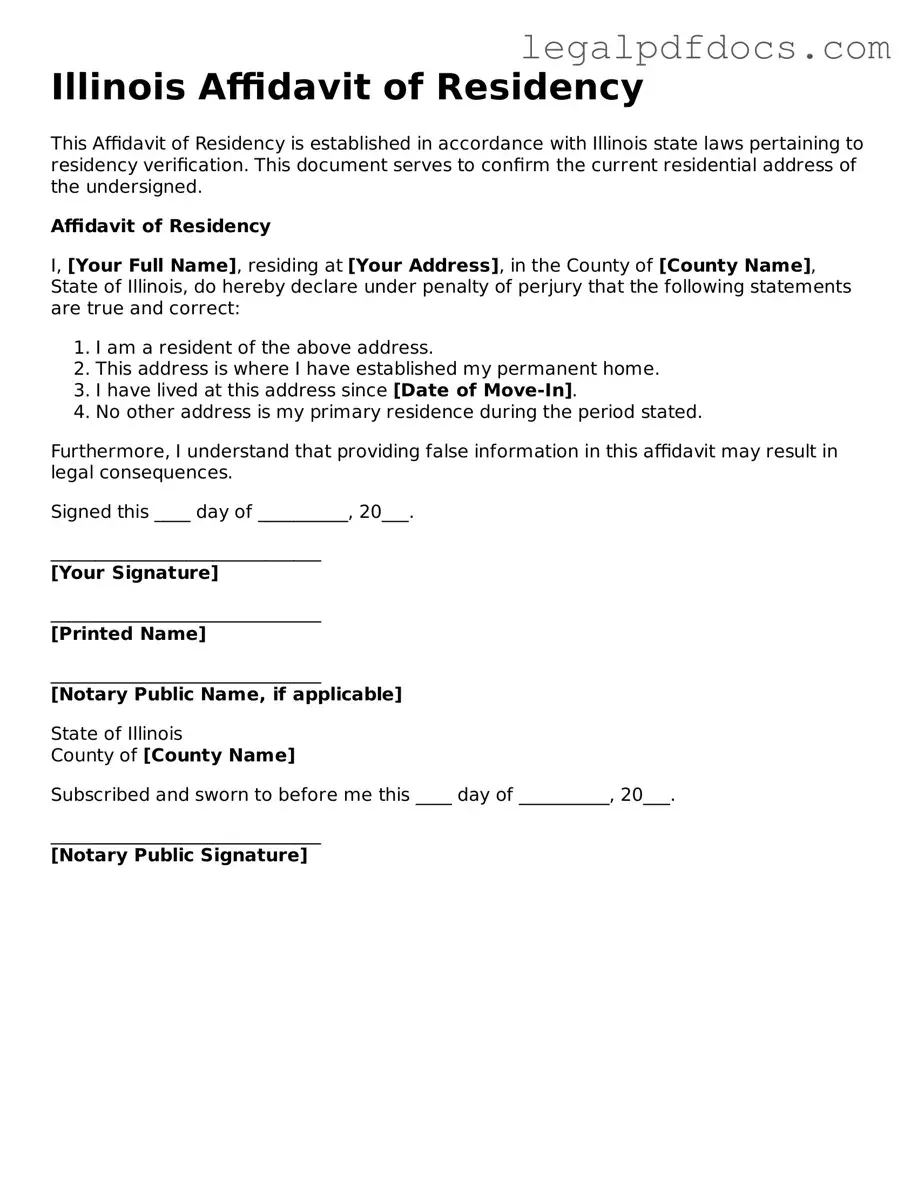Official Affidavit of Residency Form for Illinois
The Illinois Affidavit of Residency form serves as a legal document that verifies an individual's residence within the state of Illinois. This form is often required for various purposes, including school enrollment and public assistance applications. Understanding how to complete this form accurately is essential for ensuring compliance with state requirements.
Ready to fill out the Illinois Affidavit of Residency form? Click the button below to get started!
Open Affidavit of Residency Editor Here
